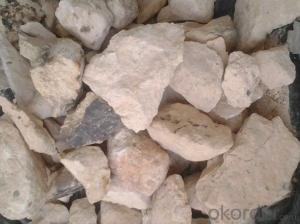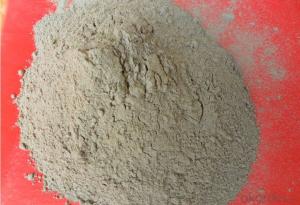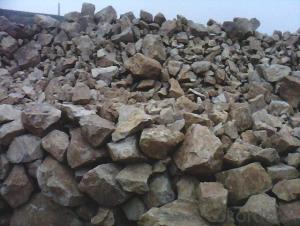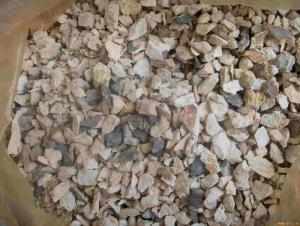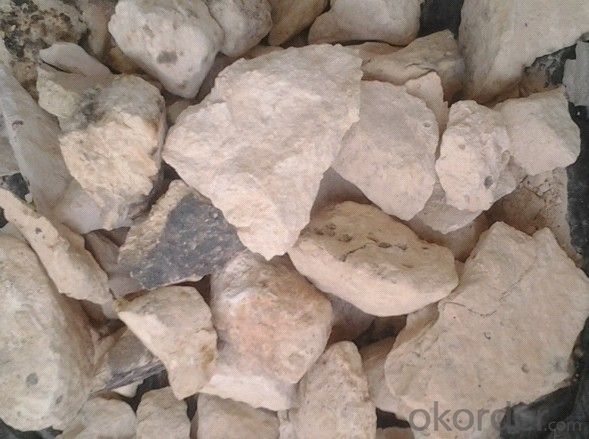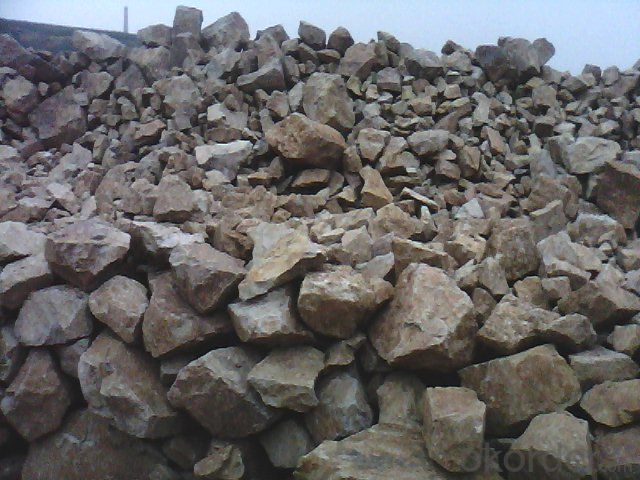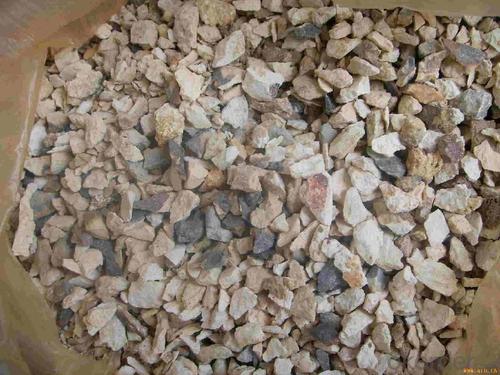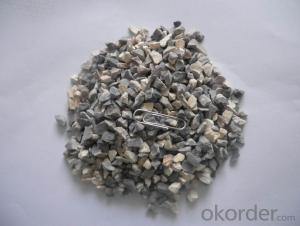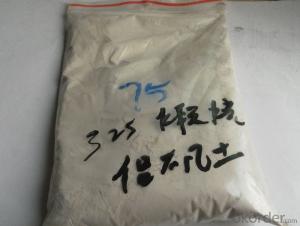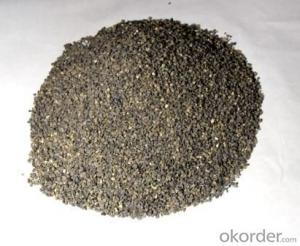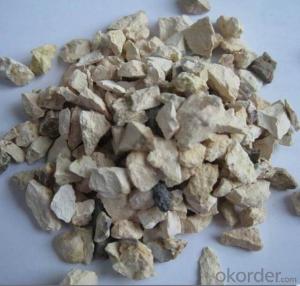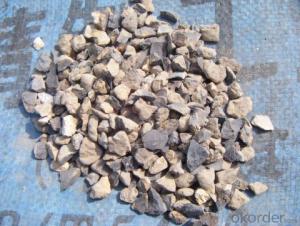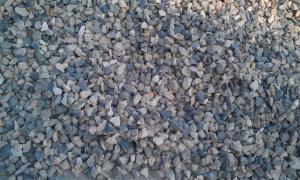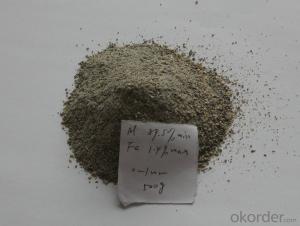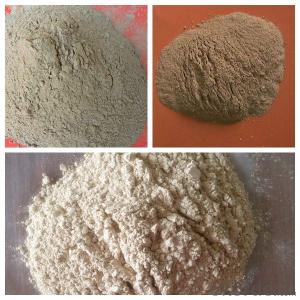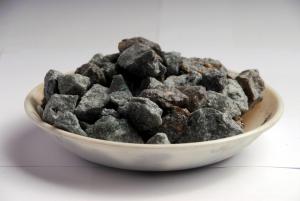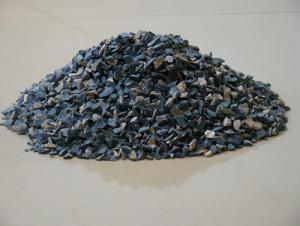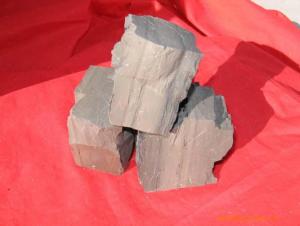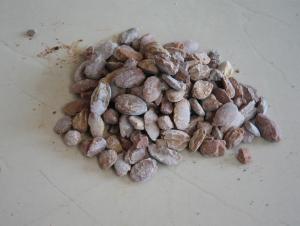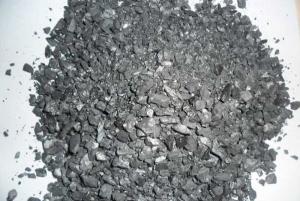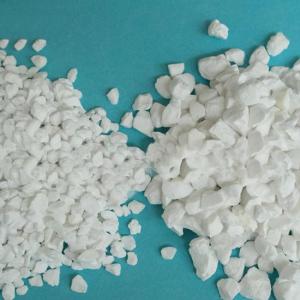Raw Materials for Refractory:Calcined Bauxite Clinker-Rotary Kiln Bauxite
- Loading Port:
- Tianjin
- Payment Terms:
- TT or LC
- Min Order Qty:
- 12 m.t
- Supply Capability:
- 11111111 m.t/month
OKorder Service Pledge
OKorder Financial Service
You Might Also Like
Calcined Bauxite Clinker-Rotary Kiln Bauxite
1.Structure of Calcined Bauxite Description
Calcined bauxite is one of the principal ore of aluminum. Calcined bauxite contains hydrous aluminum oxides and aluminum hydroxides, formed through the laterization of aluminous rocks in tropical and subtropical areas .calcined bauxite is obtained by calcining (heating)superior grade bauxite at high temperature (from 85OC to 1600C) .this removes moisture thereby increasing the alumina content. compared to an alumina content of about 57%to 58%in raw bauxite, calcined bauxite has an alumina content of 84%to88%.the heating is carried out in rotary kilns
2.Main Features of the Calcined Bauxite
Calcined bauxite is one of the principal ore of aluminum. Calcined bauxite contains hydrous aluminum oxides and aluminum
hydroxides, formed through the laterization of aluminous rocks in tropical and subtropical areas .Calcined bauxite is obtained by calcining (heating)superior grade bauxite at high temperature (from 85OC to 1600C) .This removes moisture there.By increasing the alumina content,compared to an alumina content of about 57%to 58% in raw bauxite, calcined bauxite has an alumina content of 84%to88%.The heating is carried out in rotary kilns.
3.Main usage of the Calcined Bauxite
(1) aluminium industry. Used in national defense, aerospace, automotive, electronics, chemical industry, daily necessities, etc.
(2) precision casting. Alumina clinker made after the mould precision casting processed into fine powder. Used in military industry, aerospace, communications, instrumentation, machinery and medical equipment department.
(3) is used for refractory products. High bauxite clinker refractoriness is as high as 1780, chemical stability strong, and good physical properties.
(4) aluminum silicate refractory fiber. With light weight, high temperature resistance, good thermal stability, low thermal conductivity, heat capacity is small and the advantages of resistance to mechanical shock. Used in iron and steel, nonferrous metallurgy, electronics, petroleum, chemical, aerospace, atomic energy, defense and other industries.
(5) in magnesia and bauxite clinker as raw materials, add the appropriate binder, used for pouring ladle whole ladle lining has particularly good effects.
(6) manufacture alumina cement, abrasive materials, ceramic industry and chemical industry can be aluminum of various compound.
4. Calcined Bauxite Images
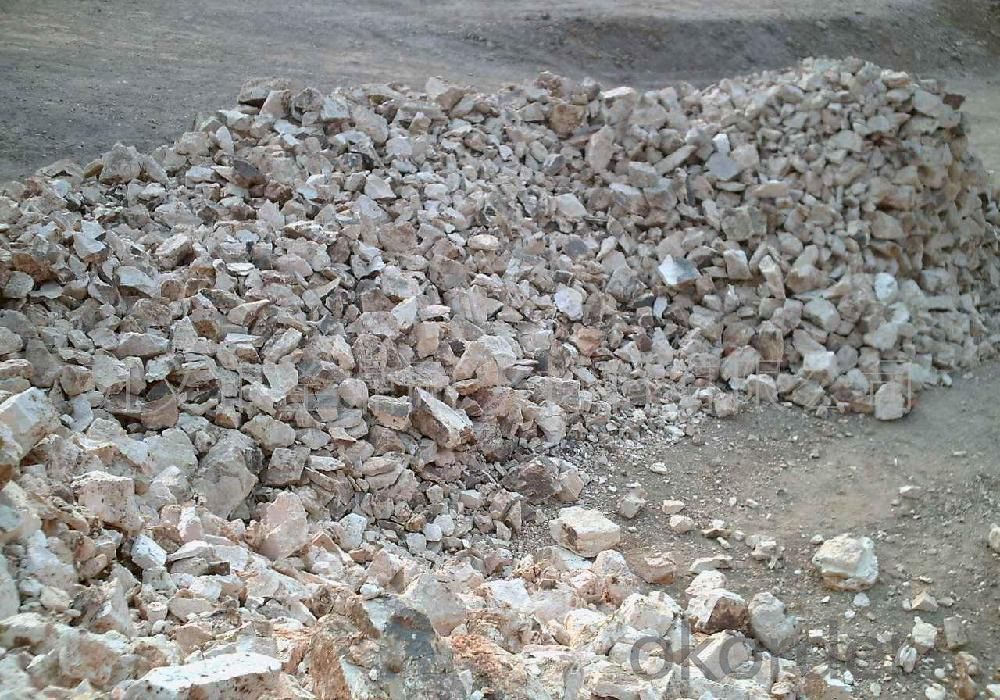
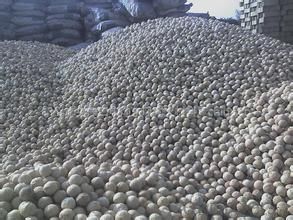
5. Calcined Bauxite Specification
Grade/Item | Chemical composition % | Bulk density g/cm³(min) | Water absorption% | ||||
AL2O3 | Fe2O3 | Ti02 | CaO+MgO | K20+Na20 | |||
GAL-88 | >=88 | <=1.5 | <=4.0 | <=0.4 | <=0.4 | >=3.15 | <=4 |
GAL-85 | >=85 | <=1.8 | <=4.0 | <=0.4 | <=0.4 | >=3.10 | <=4 |
GAL-80 | >=80 | <=2.0 | <=4.0 | <=0.5 | <=0.5 | >=2.90 | <=5 |
GAL-70 | >70--80 | <=2.0 | - | <=0.6 | <=0.6 | >=2.75 | <=5 |
GAL-60 | >60--70 | <=2.0 | - | <=0.6 | <=0.6 | >=2.65 | <=6 |
GAL-50 | >50--60 | <=2.5 | - | <=0.6 | <=0.6 | >=2.45 | <=6 |
6.FAQ of Calcined Bauxite
1). Q: Are you a factory or trading company?
A: We are a factory.
2). Q: Where is your factory located? How can I visit there?
A: Our factory is located in ShanXi, HeNan, China. You are warmly welcomed to visit us!
3). Q: How can I get some samples?
A: Please connect me for samples
4). Q: Can the price be cheaper?
A: Of course, you will be offered a good discount for big amount.
- Q: How to divide fire rating of decorating materials ?
- Generally speaking, it is divided into Level A: noninflammability; B1: difficult-flammability; B2: combustibility; B3: inflammability.
- Q: How long is the fire-fighting time of A class fire resisting window?
- Duration of fire resistance of A class fire resisting window is not less than 1.2 hours; B class window is not less than 0.9 hours. And when install fire window, you must use Level to correct or use hanging line method to correct verticality of four directions, making its same horizontally anf vertically. Window frame must be integrated with the building, using wooden or metal parts connected to the wall. After steel frame is installed, cement mortar must be watered between window frame and wall , and is maintained more than 24 hours before normal use.
- Q: What the fireproofing materialare of the refractory kettle and where they can be sold?
- Many places sell these. Nearly 10 years, can't brun when it is dry, adsorption. You can also baidu these materials. Heat transfer evenly, feldspar, clay and other raw materials with a ceramic products. Traditional casserole can not resist heat difference and also can withstand for 100 high temperature without crack. Aiming at the problem of traditional casserole, easy to crack and air permeability, people joined the spodumene on raw material, produce a high-temperature resistance casserole. It is produced after the high temperature burning makes an earthenware pot to keep the original advantages. Hebei has many places to sell these materials and is also relatively cheaper. The traditional casserole has features of not easy to transfer heat's quartz and slow cooling. Due to production technology and raw materials, it greatly improves the casserole' practicability after research and improvement.
- Q: How long does it take for refractory cement to solidify?
- 1. First you should be aware of the concepts of condensation and condesation time. Refractory cement belongs unshaped refractories, which when added water or liquid binding agent to mix, the agitation material will gradually lose thixotropy or plasticity and become in a state of solidification, thus is solidified. The time needed to finish the process is called solidification time. The whole process is divided into initial and final set. When beginning to lose plasticity called the initial setting, when called plasticity completely lost the final setting. 2. For refractory cement, the solidification time depends on the matching of the material and the parts and using methods. Under normal circumstances, in order to meet the requirements of time of construction, the initial set time should be no shorter than 40min, and the final set time should be no longer than 8H 3. There are also some exceptions. When refractory cement is used for spraying and injection operation together with other refractory castable, the set time is required as short as possible, sometimes flash set is required to prevent the occurrence of peeling or collapse of the spraying layer.
- Q: Why does refractory need to add coarse firstly and then add fine aggregate?
- Oh, adding coarse aggregate first is to select good material to make aggregate, and the rest cna be made into fine aggregate. Because if it contains impurities, once being sintered, the appearance will be affected, but fine aggregate does not have this impact.
- Q: How to divide the fire rating standards of insulation materials?
- The fire rating classification standards of insulation materials, 1. Insulation materials with A-level combustion performance: inorganic fiber spraying, rock wool, glass wool, foam glass, ceramic foam, foam cement, close-celled perlite, etc. 2. Insulation materials with B1-level combustion performance: specially-treated extruded polystyrene boards(XPS)/ specially-treated Polyurethane(PU), Phenolics, Polystyrene rubber powder particles,etc. 3. Insulation materials with B2-level combustion performance: Expanded polystyrene sheets(EPS), Extruded polystyrene board(XPS), Polyurethane(PU), Polyethylene(PE), etc.
- Q: What materials are needed to make the amorphous refractory bricks?
- Amorphous refractory brick is composed of a certain proportion of aggregate and powder, a binder and an additive, and can be directly used without high temperature firing.
- Q: What are refractory materials?
- Refractories can be divided to two categories based on the shape and three categories according to the chemical nature of acidity, neutralily and alkalinity. Alkaline refractory materials are magnesia-carbon brick, magnesia chrome brick, calcium magnesium brick and magnesia-chrome bricks. Neutural refractory mateial are high alumina brick, corundum brick and clay brick. Case-hardened refractory materials are castable, ramming mass, gunning mix, coated mix, dry vibration material, etc.
- Q: what textures of furnace refractories are good?
- The common one uses the ordinary aluminous fireclay brick and GB / T 3994-2005 insulating fireclay brick. The ones with excellet texture are high-grade thermal insulation refractory brick and GB / T 3995-2006 high alumina insulating firebrick, whose model is A13, the texture is alumina, A13 50u, advanced heat insulating brick B5; intermediate heat insulating brick B2, and so on. Dolomite brick: The formation of coating is of good performance and corrosion resistance, but to some extent, there exsits the f-CaO in the brick, which is easy to hydrate, and hard to transport and storage, thus less using in the production. Magnesia-chrome brick: The formation of coating is good, so it is widely used for burning zone, but the disadvantage is poor thermal shock resistance, coupled with the highly toxic positive Hexavalent Cr, so the international countries that produce and use the magnesia-chrome bricks are gradually reducing. The production unit using this brick now, please find alternatives as soon as possible.
- Q: What are the new refractories?
- The zirconium oxide produced in Gao Ha in Zibo can reach 2500 degrees.
Send your message to us
Raw Materials for Refractory:Calcined Bauxite Clinker-Rotary Kiln Bauxite
- Loading Port:
- Tianjin
- Payment Terms:
- TT or LC
- Min Order Qty:
- 12 m.t
- Supply Capability:
- 11111111 m.t/month
OKorder Service Pledge
OKorder Financial Service
Similar products
Hot products
Hot Searches
Related keywords
